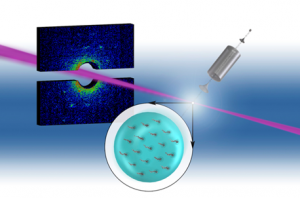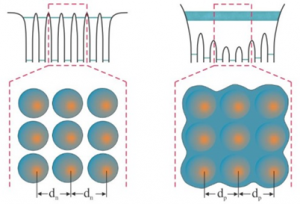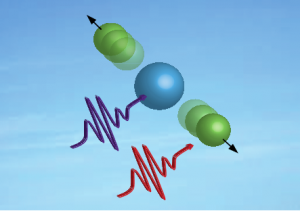
We are currently witnessing a revolution in x-ray-based science. The advent of linear accelerator-based free-electron lasers (FELs) allows the generation of extremely intense and coherent x-ray flashes with femtosecond pulse length, opening the door for investigating dynamic processes on the time scale of electron movements and imaging dynamics in ultradilute gas-phase samples with atomic resolution. The rapid development of FELs opens new opportunities for e.g. multi-color pump/probe approaches, attosecond x-ray physics, and scanning techniques. To pursue these opportunities new experimental approaches and novel instrumentation are needed. The next-generation synchrotron sources complement the capabilities of free-electron lasers with their wider energy range and high repetition rate.
In the Laboratory for Ultrafast X-ray Sciences we design and perform experiments at the frontier of ultrafast and ultra-intense x-ray sciences with a focus on the following topics:
Novel approaches of x-ray imaging: Intense x-ray pulses from x-ray free-electron lasers, containing on the order of 1012 photons in a 100 fs pulse, allow taking snapshot of single nanoparticles in single shots. We have successfully used these pulses to e.g. image single clusters, to follow transient electronic excitations, or to take snapshots of quantum vortices in He droplets. We are pursuing strategies to overcome the current limitations in single-shot x-ray imaging through advanced instrumentation, novel accelerator modes, and tailoring the x-ray pulse parameters to the samplestructures.

.
Ultrafast dynamics in externally driven finite systems: For any sample in strong fields, the electron excitation and redistribution within the sample leads to strong changes in its interatomic potential energy landscape and subsequently a strong structural response. We have performed the first femtosecond time-resolved coherent x-ray diffractive imaging and scattering experiments, following the non-equilibrium dynamics of individual nanoparticles after exposure to intense pump pulses. Our future work aims at further developing the optical/x-ray and x-ray/x-ray pump/probe imaging approach in order to visualize the light-induced electron dynamics and understand the strong interaction between electronic excitation and ultrafast lattice response on the nanoscale.

.
Following electronic excitation in time and space: The ability to follow and possibly control the dynamics of electronic excitations has been a longstanding goal in chemistry. Following light absorption, a series of mechanistic steps involving charge migration and transfer, geometric and nuclear rearrangement, as well as bond breaking and forming can take place. X-rays can serve as both, element-specific local pump and probe pulses. X-ray free-electron laser facilities are actively developing methods for delivering two-color two-pulse schemes so that different sites can be specifically excited or probed. We have employed such schemes for a first demonstration experiment of hetero-site specific x-ray pump-probe ion spectroscopy yielding detailed insight into the break-up mechanisms of a molecule [6]. The real goal for relevant chemistry questions, however, is the ability to follow the electronic excitation, charge migration, and transfer prior to the nuclear relaxation not only in idealized conditions but also relevant chemical environments. We are currently actively developing a combined experimental and theoretical approach for directly mapping the transient electronic configurations during electronic and nuclear relaxation of core-excited molecules on the femtosecond time scale with time-resolved photoemission and are planning to expand these capabilities to liquid jets and surfaces.
